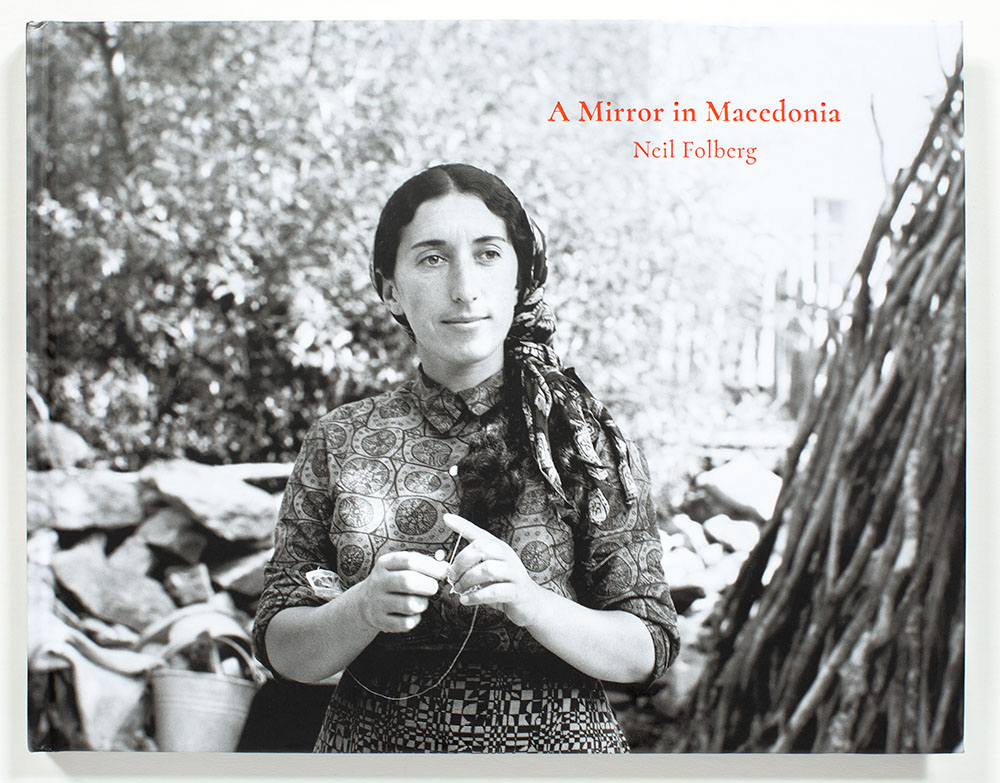
Review by Douglas Stockdale •
This book is part retrospective with an autobiography about the early phase of Neil Folberg’s long photographic career, and part portfolio for early unpublished body of work. As an interesting combination of biography and portfolio, it is front-loaded with his personal reflections on his career change to photography while studying at University of California, Berkeley with William Garnett while being mentored by Ansel Adams. Interspersed are photographs from his grant funded study of Macedonia. A Macedonia 1971 portfolio is provided in the latter half of the book as well as index of images as the Macedonia portfolio itself is not captioned.
This is a story that I can easily relate to as this period coincides with my personal decision to use a medium format SLR with a single normal lens in conjunction with black and white film and the zone system. His project and writing seem to agree with my observations of how having just the basics of photographic equipment work very well to liberate oneself to become singularly focused on a subject.
Folberg provides an interesting narrative about the social/political implications that can impact any project in a politically contested and sensitive region. At the time of his project this region of Macedonia was under the control of communist Yugoslavia, which is now called North Macedonia, and is an ethnic combination and social overlapping of Slavic, Albanian, Turks, Serbs, Bosniaks and Aromanians that adds to the cultural complexity of his project.
He was able to tease out this remarkable photographic project in spite of a government’s oversight, sometimes subtle, and on occasional very confrontational. At the conclusion of this stay, Folberg was able to obtain a brief assessment of the constant surveillance and extensive scrutiny of him by the government. It appeared to Folberg that their surveillance essentially was to ensure that he was not ‘wondering off the reservation’, and when on one occasion when did, their surveillance diligence continued. We frequently are provided a visual narrative but rarely do we obtain a backstory about potential intrigue to obtain and create a visual story.
In retrospect, this book, as frequently occurs with most photographs, is part historical documentary, that many of his older subjects are no longer living today, and that the government of this region has changed with its borders, boundaries and identification now completely different as it was then. The culture, politics and society of this region has certainly evolved since 1971.
His urban and rural landscape photographs are beautifully composed with wonderful black and white tonalities befitting his earlier time spent with Adams and Garnett and others of the West School of Photography reflecting their black and white graphic sensibilities. For his portraits Folberg was able to get close and create engaging portraits that he complements with mid-range documentary style photographs to help establish the environmental context for the individuals he is photographing. The pairing of the mid-range with the tight composure makes for a very compelling insight into the individuals and what their lives encompass.
What results establishes a wonderful pulse on the community. It should be noted that Folberg benefited from an earlier visit to this region during which he had a two-week immersion course in one of the local languages and then subsequently over two years in conjunction with anthropology studies at U.C. Berkeley. It appears that knowing the local language permitted him to make personal connections and subsequently intimate photographs, although it was very obvious to his subjects that Folberg was an outsider.
As an example of a wonderful viewpoint of an urban landscape in conjunction with a culture event are the two street views made in Titov Veles (now called Veles) of a corso, below. Corso is the name of the formalized evening stroll by young people in the town center. Boys walked with boys and the girls walked with girls. This pair of photographs have a very contemporary viewpoint utilizing a longer exposure to allow the many individuals on the street to blur as they move around. As a result, these two photographs are infused with sense of dynamic visual tension. Likewise, his management of the photographic tonalities creates a pair of very engaging images of an interesting social moment, which I enjoy immensely.
Book titles are always intriguing and, in this case, the inclusion of the word ‘Mirror’ could relate to Folberg’s personal reflections, that this publication is reflecting on the past time of Macedonia or a take-off on the writings of John Szarkowski’s Windows and Mirrors published in 1978. Perhaps all three and maybe even some more. When Szarkowski states that Minor White along with Walter Chappell provides a Mirror or “romantic view” as an evolutionary of Stieglitz and subsequently Weston; a love for the eloquently perfect print; intense sensitivity to mystical content of the natural landscape and minimal interest of man as a social animal. This is ever bit applicable to this body of work by Folberg, whose photographic work joins that of other ‘Mirror’ photographers like Paul Caponigro, Ralph Gibson, Judy Dater and Robert Rauschenberg, many of whom have been featured previously on PhotoBook Journal.
____
Douglas Stockdale is the Senior Editor & founder of the PhotoBook Journal.
____
A Mirror in Macedonia, Neil Folberg
Photographer and gallery owner: Neil Folberg, born San Francisco, CA and residing in Jerusalem, Israel
Publisher: Lecturis, Netherlands, copyright 2021
Essays: Neil Folberg, Ilina Jakimovska
Text: English
Hard cover book, lithographic printing and sewn, with photographic index, ISBN 9789462264021
Photobook Designer: Lecturis
___










Articles & photographs published on PhotoBook Journal may not be reproduced without the permission of the PhotoBook Journal staff and the photographer(s).